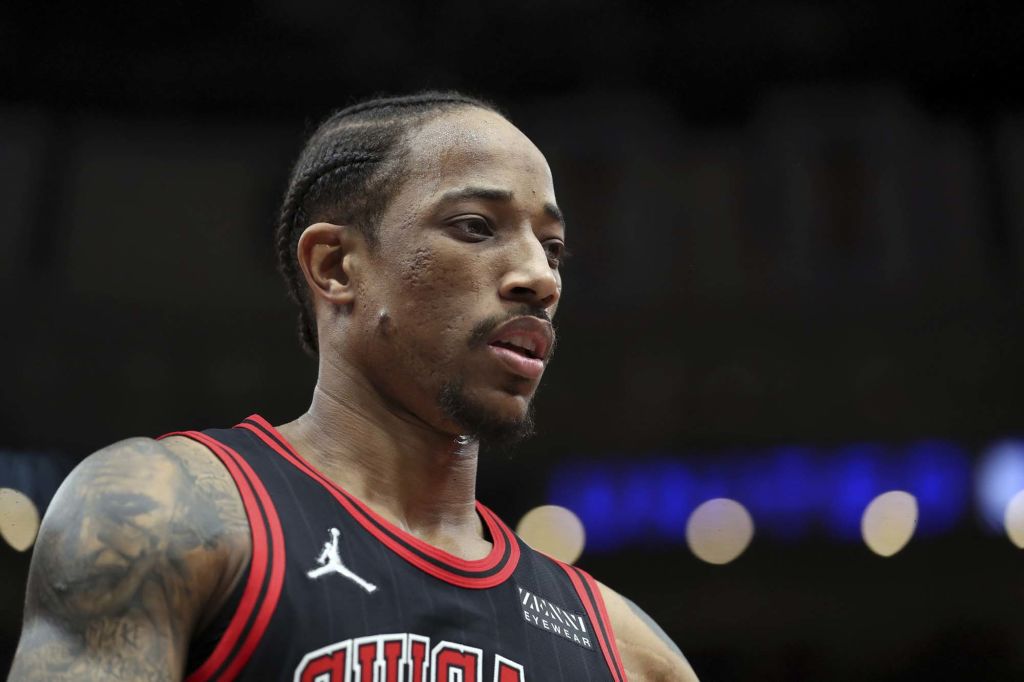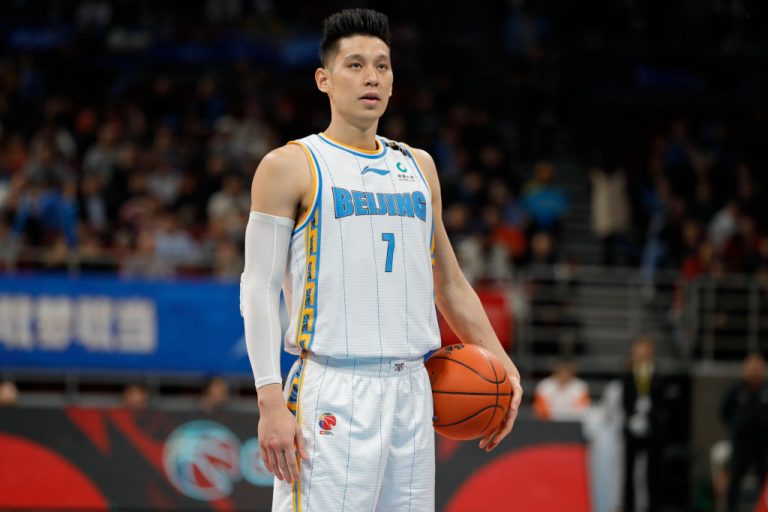What's Missing in How We Talk About Athlete Mental Health?
Why this matters
The sports industry has heightened its attention on the mental wellbeing of athletes, and most professional teams now employ mental health professionals. But new Global Sport Institute research shows there are gaps in how athlete mental health is being studied and treated, with profound consequences.
The man often credited with opening America’s eyes to the mental health struggles of elite athletes recently finished the best regular season of his pro basketball career. And he believes the relief of being open about depression helped get him to the level of excellence he achieved this season.
DeMar DeRozan hails from Compton, California, and became known as the star of the Toronto Raptors for his sweet mid-range jumper and subdued personality. But in the summer of 2018, DeRozan took the public inside his head in an interview in which he explained how depression affected his life and career, telling The Toronto Star that his silent intensity was a way “to be able to cope with whatever it is you’ve got to cope with.” Since that point, DeRozan has steadily improved as a basketball player, averaging a career-best 27.9 points per game in 2022 at age 32. Today, DeRozan credits his own determination to speak up about depression as a driving force in his steady performance leading the Chicago Bulls to the National Basketball Association playoffs.
“You have a clearer mind, and you have a different type of stance of knowing yourself,” DeRozan recently told The Washington Post. “Not feeling like you’re behind the curtain, it gives you a sense of freedom because so many people don’t know how to let that out.”
For DeRozan, the freedom to be open about what was going on in his mind helped him be at his best, professionally and personally. But not all athletes benefit so powerfully, in large part because the support and treatment they receive is not individualized. Trainers and sports psychologists don’t understand the full scope of their struggles.
Athletes are often among the most famous and visible people in a society and their performance is the difference between ecstasy and agony for fans. By not doing enough to ensure their well-being, the sports world also limits the impact athletes can have as the voices and faces of vulnerability, triumph, and more.
Where there is immense energy funneled toward talking about mental health and even hiring staff to manage mental health in sports organizations, the lived experiences of athletes are still often left out of treatment plans and org charts. According to new research from Alisia Tran, PhD, a Global Sport Scholar at Arizona State University’s Global Sport Institute, the specifics of athletes’ lives and their upbringings are largely ignored in the sports industry, even as numerous mission statements and best practice documents flutter across the business each year.
Since 2016, just 8.3 percent of published mental health studies have included references to race, ethnicity, or culture, according to a literature review conducted by Tran.
“An athlete doesn’t operate in isolation,” says Tran. “We’re really missing out on a lot of the whole person when we’re not considering things like culture as well as an athlete’s mental health generally.
“When I think about how it could be that we’re missing out on a portrait of a whole person by being acultural, I think we’re reinforcing this really narrow, performance-focused view of athletes that really doesn’t speak true to the power of sport and the power of athletes to affect others through sport.”
Across all sports, athletes who have discussed their diagnoses or psychological challenges often express how personal their journey has been. In response to DeRozan’s comments, NBA champion Bruce Bowen told ESPN that "(Black men) are brought up to believe if you talk to people about those things, that's a sign of weakness. … the other problem we have is this deep-seated mistrust of the actual people who can help you.”
Tennis legend Serena Williams and Olympic shot put medalist Raven Saunders have acknowledged that being Black women contributed to the mental health challenges they faced. 2020 U.S. Open champion Naomi Osaka was the victim of severe heckling at the Indian Wells Masters tournament this year and referenced the racist jeers Williams suffered at the same tournament more than two decades prior.
And that’s just a handful of Black athletes. White men, like the NBA’s Kevin Love or college football player Harry Miller, have been among the more vocal faces of depression among athletes as well. Latina Olympic gymnast Laurie Hernandez recently challenged the Hispanic community to be more hospitable for those dealing with psychological demons. Asian-American NBA phenom Jeremy Lin consistently draws connections between the racism he faced playing basketball and his depression.
“If people are supposed to be a team and they’re supposed to be together, I think sometimes we think that if we are colorblind and gloss over our cultural differences, then we’ll be more united. The melting pot idea,” says Tran. “But you’re asking people to suppress and not share an important part of their identity and who they are and where they’re coming from. You’re actually keeping those divisions there. That’s something that isn’t actually helpful for teams, coaches, and whole sports.”
Simple differences in who people are and where they come from don’t always manifest in mental illness or severe psychological trouble. A teammate, coach, or trainer trying to get to know an athlete won’t necessarily flip the switch and make that athlete a legend overnight. But if differences are not taken seriously—a puzzle left incomplete—it limits a person’s capacity to be their whole self and be at their best.
“You just have to wonder if somebody can’t be part of a team, if we don’t include all of them, how is that going to go well?” asks Tran. “You just really wonder whether we’re losing out on great talent and potential that way. If you don’t take the ‘bad’ parts of (an athlete), you won’t get the ‘good’ parts of them either.”
Today, the NBA, the National Football League, and Major League Baseball, the three biggest pro leagues in the United States, each mandate that teams employ mental health clinicians. If teams, leagues, and other sports organizations are using “colorblind” research to treat and develop support systems for the athletes they employ, they run the risk of treatment that is insufficient or overly broad.
As teams and leagues increase personnel and develop policies around the mental wellbeing of their players, coaches, and staff, a focused treatment plan will be most successful, Tran says. With this in mind, here are four steps sports psychologists can take to suffuse their treatment with a personalized approach:
1. Value sociocultural experience. Among Filipino athletes, the Bahala na cultural mindset (which translates to “leave it up to God”) has been found to ease stress and anxiety. Studies of Dominican baseball players show how drawing on religion can help manage the emotions of competition, while the struggle to make a living playing the sport has been linked to major stress. Mental health professionals must have insight into the lives and backgrounds of athletes in order to treat them effectively.
In cases of discrimination that athletes face, says Tran, simply asking and understanding can go a long way toward coaches and teammates being able to be there for an athlete.
2. Identify sport-specific needs and career trajectory. Tran found that NFL players’ suicide rates have recently been found to be higher than MLB players. The nature and structure of a given sport can affect how athletes experience competition and professional routines within the sport.
3. Monitor the role of modern innovation in sport (tech, social media, NIL). Extensive research already exists regarding the (often negative) effects of humans’ increasing connection to computers and social media. As name, image, and likeness (NIL) opportunities build within college sports, athletes are increasingly looked at as “influencers” online, making social media an even more deeply ingrained part of their identity and career.
4. Don’t forget about COVID-19. It’s no coincidence mental health has taken on a greater significance in the world during the COVID-19 pandemic. Shutdowns forced athletes into isolation and competitions took place in empty buildings for more than a year. At lower levels, sport was also shut down during the early months of the pandemic, preventing children from training, competing, and interacting with teammates and coaches. The lingering effects of COVID-19 on athlete mental health are still being studied.

Please see our list of Mental Health Resources if you are seeking information or assistance regarding mental health.
Monthly Issue
Mental Health: A New Priority in Sport
Athletes continue to tell us they are not OK with their actions and words. In response, the sports industry has acknowledged it can and should be doing more to support the people who are its lifeblood, from athletes to coaches and beyond.
Sport is both reckoning with its roots, uncovering how history and habit created circumstances that don’t suit everyone who competes, as well as navigating new territory during a time of unprecedented strain on our mental well-being. By making mental health a priority, sport has an opportunity to confer a host of benefits supporting mental wellness and to be more safe, inclusive, and inspiring.



